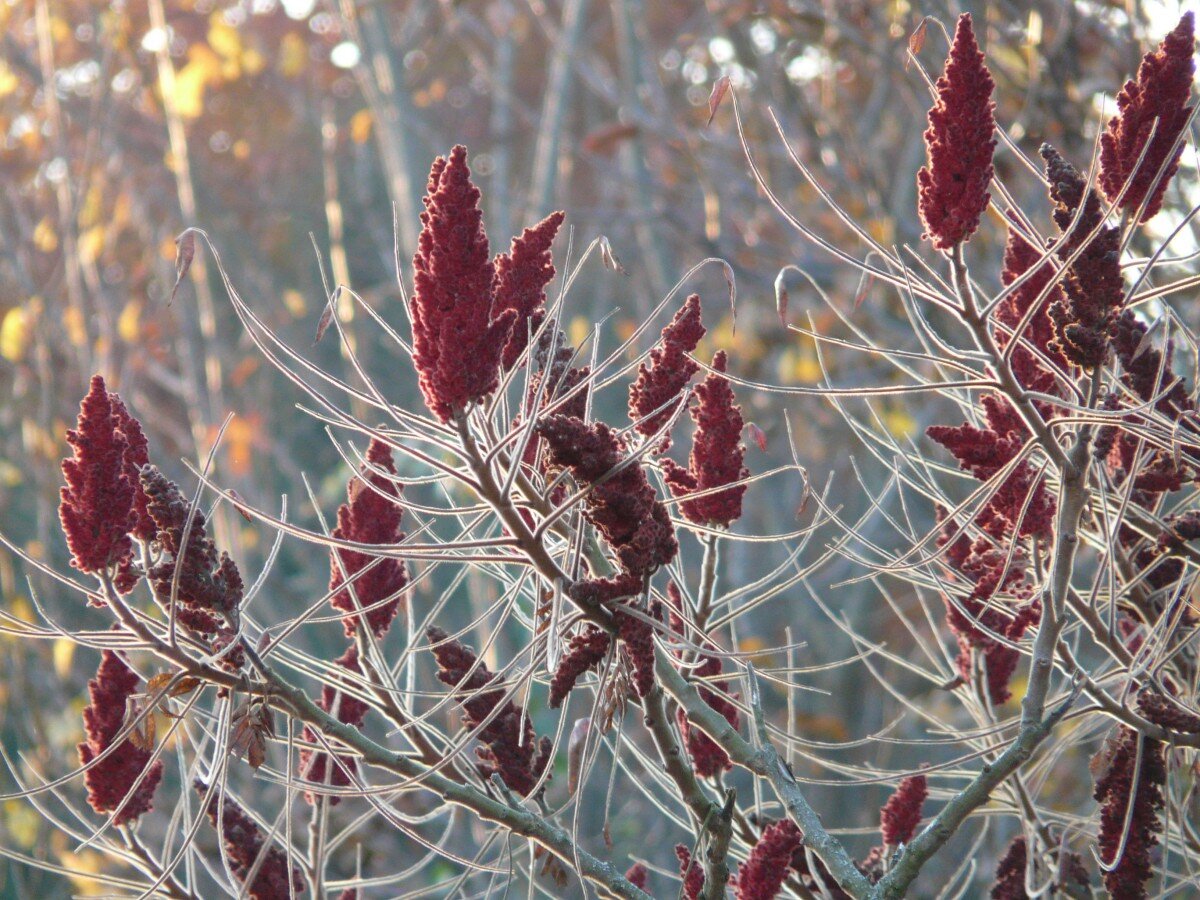Food & Climate
Sumac berries, which is part of traditional foods, was one of the treatments that grandmothers gave as medicine in some cultures. It is also one of the natural additives that add a special taste to foods. What are they?
Last month, Diné College’s Land Grant Office in America hosted the food gathering summit to talk about the traditional food systems of the Diné, and sustaining the practice of such foods, was the purpose of the food summit, according a report seen by “Food & Climate” platform.
Diné College is the first tribally controlled and accredited collegiate institution in the United States. Established in 1968 as Navajo Community College, it was later renamed Diné College.
Sumac berries
Daryl King grew up eating chiiłchin—a pudding made from crushed sumac berries—that her grandmother cooked. King also makes jam from the berries. It’s a product that sells quickly, she said.
“When I’m selling jam, I hear a lot of stories about chiiłchin,” King said. “It’s been in our generation as medicine, just like corn pollen.”
Sumac berries are shrubs that can grow up to nine feet tall and can be found on the Navajo Nation in canyons, sand dunes, forestland and sometimes near streams, according to the Diné Native Plants Program, part of the tribe’s Department of Fish and Wildlife, according to “Inside climate news”.
And sumac is a spice harvested from the berries of the sumac shrub (which is different from its relative, poison sumac), says Stephanie Michalak White, EdD, chef instructor and director of education at Auguste Escoffier School of Culinary Arts. Specifically, the term sumac comes from
the word sumac, which means dark red in Arabic, says Erin Miller, executive chef and owner of Urban Hearth, a farm-to-table restaurant in Cambridge, Mass. The shrub is native to the Middle East, Mediterranean, and parts of southern Europe, says Miller. However, it naturally grows around the world, including North America, says White.
Daryl King King, a Shiprock resident, picks sumac berries in the wild. Occasionally she travels to Arizona or away from the tribe’s land to Colorado to gather them.
But summit attendees who collect plants in the wild or farm crops like corn are noticing the effect of climate change on these food resources.

“I think the plants are talking to us these days,” King said, noting that sumac berries are smaller and less vibrant than in previous seasons.
Tasty and healthy
“If sumac isn’t already a staple in your pantry, you should consider adding it. This Middle Eastern spice will elevate your seasoning game, thanks to its earthy-tart flavor and deep red hue. But as with all flavoring ingredients, it’s worth learning how to use sumac properly to get the most out of it”, according to some chefs that “Martha Stewart” told them.
But more important than that is the grandmothers’ vision about the importance of sumac berries in treatment, some of which were proven by a recent study.
The Department of Food Hygiene and Quality Control, Faculty of Veterinary Medicine Urmia University in Iran, found that application of bacterial nanocellulose film loaded with sodium nitrite, sumac, and black carrot extracts to reduce sodium nitrite, extend shelf life, and inhibit Clostridium perfringens in cooked beef ham.
Sodium nitrite is one of the functional food additives in the meat products industry, used for its reddish-pink color, antioxidant, and antimicrobial properties (especially against Clostridium botulinum), as well as for flavor development and extending shelf life.
However, the use of nitrite in meat poses specific issues. Nitrosamines are generated through the reaction of nitrite with secondary or tertiary amines in meat products, causing consumer concern. According to research conducted by the International Agency for Research on Cancer (IARC), this compound is probably carcinogenic to humans. These concerns have prompted researchers to explore the use of various compounds, including zinc protoporphyrin IX, nisin , and ε-polylysine, to reduce or eliminate nitrite usage in meat products.
Plant extracts may be used as alternatives to nitrite in meat products.
The fruit of the sumac tree (Rhus coriaria L.), from the Anacardiaceae family, is one of the most popular seasonings in the Middle East.
The dried powder of this fruit is used to impart a sour taste in meat dishes such as kebabs, fish, and chicken.

Several studies have shown that the water extract of sumac fruit contains compounds such as tannins (gallotannin), anthocyanins (delphinidin, myrtillin, chrysanthemin), fatty acids (oleic, linoleic, and palmitic acid), and organic acids (malic, citric, fumaric, and tartaric acid), which have potent antimicrobial and antioxidant effects, which can mitigate nitrite application in meat, according to “Science direct“.

